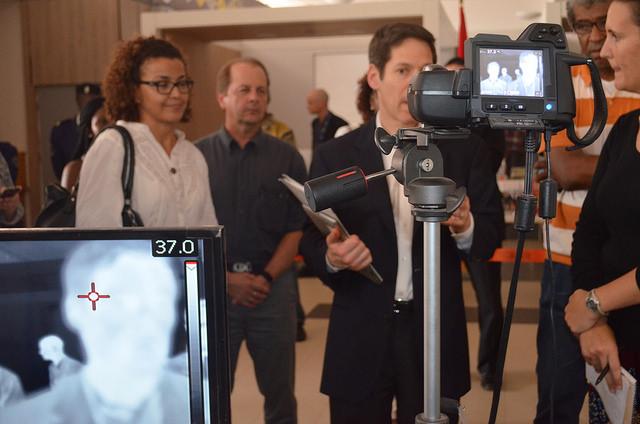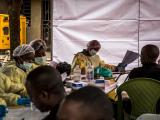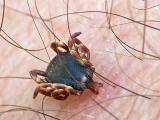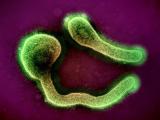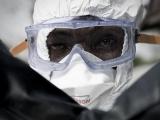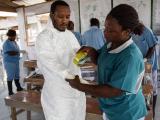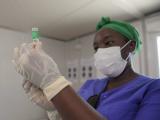Fresh from his second tour of all three of the hardest-hit Ebola outbreak countries, CDC Director Tom Frieden, MD, MPH, said today that sobering challenges remain in the response but that real progress and momentum have occurred in the region since his last visit in August and September.
Frieden's assessment comes on the heels of another high-profile tour of the outbreak region, that of United Nations (UN) Secretary-General Ban Ki-moon, who warned the global community against complacency in the Ebola battle, which has seen some progress, especially in many parts of Liberia.
The World Health Organization (WHO) today said 19,340 infections have now been reported, including 7,518 deaths. Sierra Leone has had the highest number of cases since early December, which is at 8,939 as of Dec 20. However, Liberia has the highest number of deaths, of which 3,376 have been reported as of Dec 18.
Country-specific observations, lessons
At a media telebriefing today, Frieden spoke of a mixed picture of what he observed in Guinea, from an encouraging drop in Ebola cases in a rural areas where response teams had originally faced community resistance, to deep worries about a lack of isolation beds in Conakry, the country's capital. He said a lack of beds raises the risk of people sick with Ebola remaining in the community, the key factor that fuels chains of transmission.
Regarding Sierra Leone, Frieden said that although high levels of disease in Freetown are a major concern, health officials are hoping the heightened response level there and in the western part of the country will mirror progress seen in another urban Ebola setting—Monrovia in Liberia. In describing the Ebola battle in Sierra Leone, he said the situation is more like trying to manage many brush fires than a forest fire.
On the positive side in Sierra Leone, safe burial teams have made some headway, using an approach that is culturally sensitive and involves family, he added. Despite Sierra Leone's surge in cases over the past several weeks, the country has an impressive and well-organized command center staffed by British officials, the country's health ministry, and other partners, he said.
Liberia presently has the upper hand over the disease, "but that's as of today," Frieden said. He stated that the situation can change quickly and that complacency is another challenge the outbreak region faces in the weeks ahead.
One worrying indication he saw in Monrovia was a belief by some that the urban Ebola treatment centers aren't safe, driving certain individuals to seek care in other districts, which can spread the disease and complicate contact tracing as people hire taxis or use other transportation to carry sick family members out of the capital. On the positive side, a new cemetery is opening in Monrovia, which should ease the need to cremate Ebola victims, a practice that goes against cultural practices and that health officials think may have led to clandestine burials, which are known to spread the disease.
Frieden shared several examples of outbreak responders transforming grim situations into hopeful ones, such as a social worker in Sierra Leone who lost both of his parents to Ebola but is now caring for children orphaned by the disease, and of now-idled gravediggers in Liberia who have started making furniture for Ebola survivors. He said health officials in all three of the countries are eager to learn how to manage the disease themselves and that he's encouraged by support and epidemiology expertise coming from the African Union.
The next phase of the response is to break the cycle of exponential growth, trace each chain of transmission, and strengthen health systems in areas that are free of Ebola, Frieden said. He said it's impossible to project when the outbreak will be extinguished but that Congress's recent passage of Obama's Ebola response spending request in the overall budget legislation will help the CDC do more to help the countries track cases and respond quickly to new infections.
Frieden said experiences battling Ebola in each country are yielding important lessons for the others. For example, Liberia has had success with the RITE (Rapid Isolation and Treatment of Ebola) strategy for addressing hot spots, an approach that could be implemented in Guinea and Sierra Leone. Meanwhile, sensitivity on the part of burial teams in Sierra Leone can be employed elsewhere to support safe burial goals. He added that all three countries, but especially Guinea, need infection control improvements.
Other developments
- British researchers from Cambridge University and two other institutions said in a commentary in the Dec 21 early online edition of Lancet Global Health that International Monetary Fund (IMF) economic policy reforms over the past years may have undermined the ability of Guinea, Liberia, and Sierra Leone to respond to outbreaks and other emergencies, such as the Ebola outbreak. In reviewing IMF lending programs between 1990 and 2014, they said reforms reduced government spending, included public sector wage caps that could have impacted the ability to hire and pay key health workers, and pushed for decentralized healthcare systems, which could have made it difficult to mount a coordinated response. In a statement today, the IMF said the commentary had several inaccuracies and that health spending as a percent of gross domestic product increased in all three countries from 2010 to 2013. It added that World Bank data suggest health outcomes have improved in the three countries and said IMF programs have not had any limits on the wage bill from 2000 through 2014.
- A phase 1 trial of a vaccine developed by Canadian researchers and licensed by NewLink Genetics and Merck was launched in Kenya on Dec 16, according to a Dec 19 report from AllAfrica citing the Kenya Medical Research Institute. It said the first dose was administered to a health worker at Kilifi County Hospital. The trial will measure response to a single dose, with early trial results expected in February. The vaccine, called VSV-EBOV, uses an Ebola virus protein spliced into a vesicular stomatitis virus (VSV).
- A study on the impact of Sierra Leone's Ebola outbreak on its regular health facilities revealed that the event dropped the number of hospital admissions for non-Ebola conditions by 70% and reduced the number of major surgeries by 50%. The study, by Swedish and Norwegian researchers and their partners in Sierra Leone, appeared Dec 19 in Public Library of Science (PLoS) Currents Outbreaks. The team based its findings on weekly data from 40 facilities between Jan 6 and Oct 12 of 2014.
See also:
Dec 22 CDC press release
Dec 21 Lancet Global Health commentary
Dec 21 University of Cambridge press release
Dec 22 IMF statement
Dec 19 AllAfrica story
Dec 19 PLoS Currents Outbreaks study
